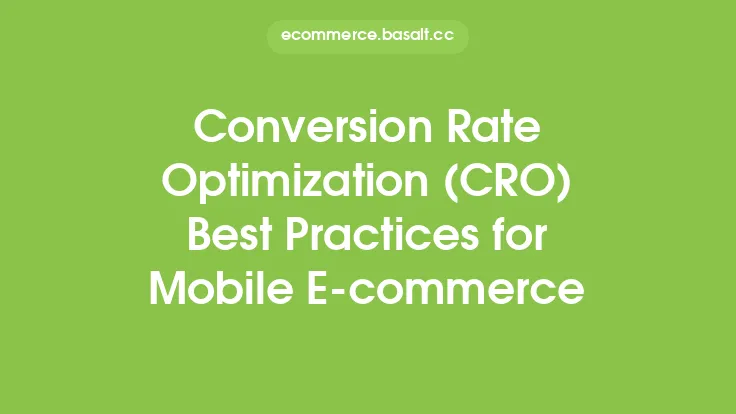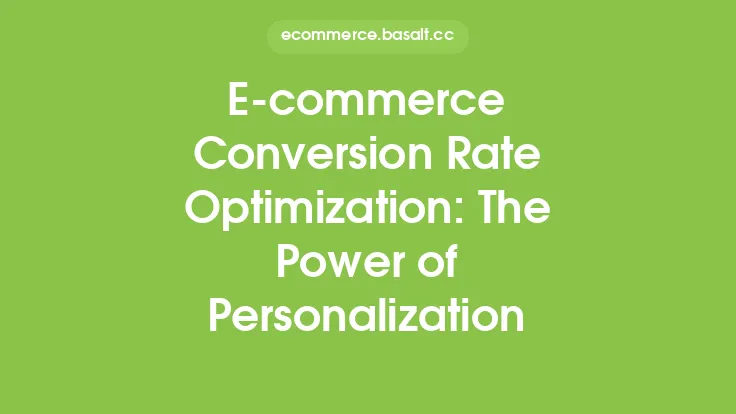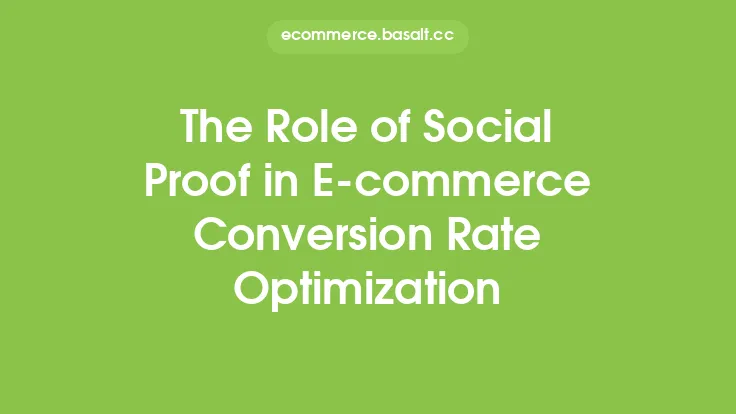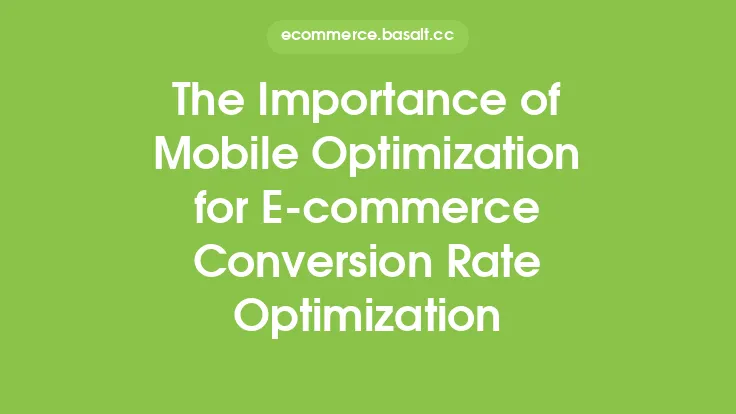When it comes to e-commerce conversion rate optimization, product pages play a crucial role in convincing potential customers to make a purchase. A well-designed product page can significantly increase the chances of conversion, while a poorly designed one can lead to high bounce rates and lost sales. In this article, we will explore the best practices for optimizing product pages to improve e-commerce conversion rates.
Understanding the Importance of Product Pages
Product pages are the most critical pages on an e-commerce website, as they provide customers with detailed information about the products they are interested in purchasing. A product page should provide a clear and concise description of the product, its features, and its benefits. It should also include high-quality images and videos that showcase the product from different angles, as well as customer reviews and ratings to build trust and credibility. By optimizing product pages, e-commerce businesses can increase the chances of conversion, improve customer satisfaction, and ultimately drive more sales.
Best Practices for Product Page Optimization
There are several best practices that e-commerce businesses can follow to optimize their product pages for conversion. These include:
- Using high-quality product images and videos that showcase the product from different angles
- Providing detailed and concise product descriptions that highlight the product's features and benefits
- Including customer reviews and ratings to build trust and credibility
- Using clear and prominent calls-to-action (CTAs) to encourage customers to make a purchase
- Providing easy access to product variations, such as different sizes, colors, and styles
- Offering personalized product recommendations based on the customer's browsing and purchasing history
- Using social proof, such as trust badges and security certificates, to build trust and credibility
The Role of Product Information in Conversion Rate Optimization
Product information plays a critical role in conversion rate optimization, as it provides customers with the information they need to make an informed purchasing decision. This includes product descriptions, specifications, and features, as well as customer reviews and ratings. By providing detailed and accurate product information, e-commerce businesses can build trust and credibility with their customers, increase the chances of conversion, and improve customer satisfaction. Additionally, product information can be used to personalize the shopping experience, by providing customers with personalized product recommendations based on their browsing and purchasing history.
The Impact of Product Page Design on Conversion Rates
The design of a product page can have a significant impact on conversion rates, as it can either encourage or discourage customers from making a purchase. A well-designed product page should be clean, simple, and easy to navigate, with clear and prominent CTAs and easy access to product information. The page should also be optimized for mobile devices, as more and more customers are using their smartphones to shop online. By using a responsive design that adapts to different screen sizes and devices, e-commerce businesses can ensure that their product pages are accessible and usable on any device.
The Importance of Customer Reviews and Ratings
Customer reviews and ratings are a critical component of product pages, as they provide social proof and build trust and credibility with potential customers. By including customer reviews and ratings on product pages, e-commerce businesses can increase the chances of conversion, improve customer satisfaction, and drive more sales. Customer reviews and ratings can also be used to personalize the shopping experience, by providing customers with personalized product recommendations based on their browsing and purchasing history. Additionally, customer reviews and ratings can be used to identify areas for improvement, such as product quality and customer service, and make data-driven decisions to optimize the product page and improve the overall shopping experience.
Using Product Page Analytics to Inform Optimization Strategies
Product page analytics provide valuable insights into customer behavior and can be used to inform optimization strategies. By analyzing product page metrics, such as page views, bounce rates, and conversion rates, e-commerce businesses can identify areas for improvement and make data-driven decisions to optimize the product page. This can include testing different product page designs, CTAs, and product information to see which ones perform best. Additionally, product page analytics can be used to track the effectiveness of optimization strategies and make adjustments as needed. By using product page analytics to inform optimization strategies, e-commerce businesses can increase the chances of conversion, improve customer satisfaction, and drive more sales.
Conclusion
Optimizing product pages is a critical component of e-commerce conversion rate optimization, as it can significantly increase the chances of conversion and drive more sales. By following best practices, such as using high-quality product images and videos, providing detailed and concise product descriptions, and including customer reviews and ratings, e-commerce businesses can build trust and credibility with their customers and improve the overall shopping experience. Additionally, by using product page analytics to inform optimization strategies, e-commerce businesses can make data-driven decisions to optimize the product page and drive more sales. By prioritizing product page optimization, e-commerce businesses can improve customer satisfaction, increase conversion rates, and drive more sales.





